A leaking roof during heavy rainfall is not just a minor inconvenience; it signals potential serious issues that require immediate attention. While light rain may not reveal structural weaknesses, intense storms can expose vulnerabilities in your roofing materials or overall structure. When roofs are correctly installed and undergo regular maintenance, they should offer dependable protection against moisture intrusion, even in the most extreme weather conditions.
Roof systems are especially prone to leaks at junctions and penetrations within the roofing profile.
Critical areas to inspect include regions surrounding chimneys, vents, skylights, and intersections of different roof planes. Additional factors contributing to leaks can include missing tiles, clogged gutters, and compromised flashing.
Furthermore, the age of the roof is a significant factor, as older roofs are generally more vulnerable to water infiltration and structural deterioration.
Recognizing the early signs of a leaky roof is essential for homeowners who wish to mitigate further damage and avoid expensive repairs. Look for water stains on ceilings and walls, peeling paint, or damp patches in the attic. These indicators can assist in addressing leaks before they escalate into severe problems that require extensive repair work.
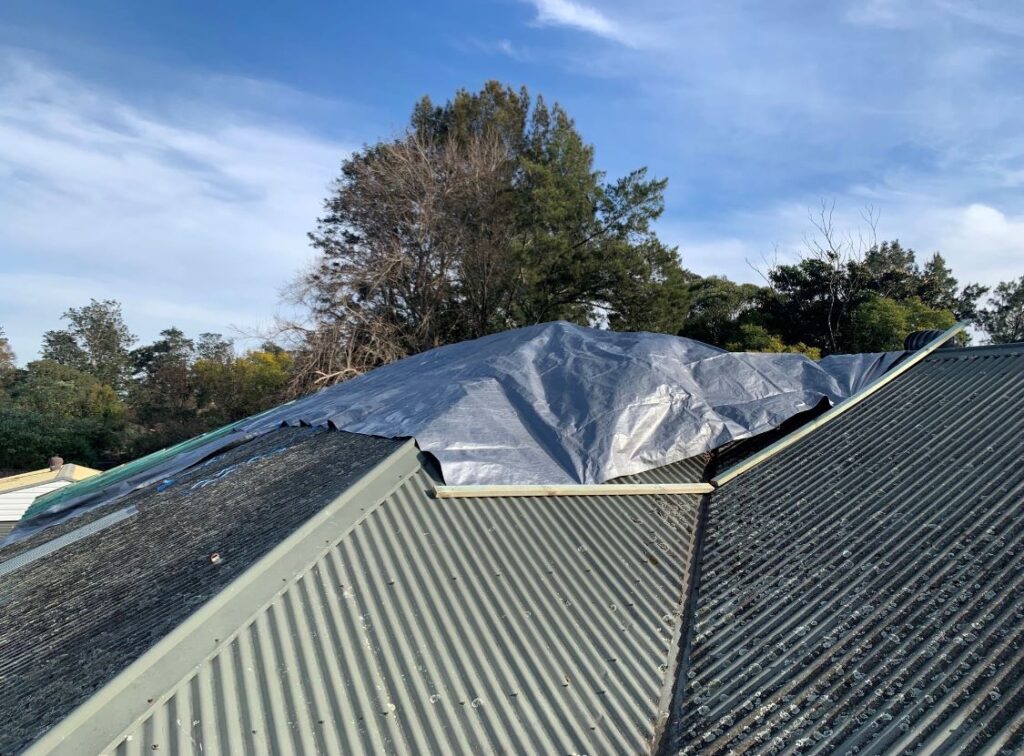
Understanding the Major Causes and Implications of Roof Leaks
Understanding the primary causes of roof leaks is crucial for homeowners who want to preserve the integrity of their property. These leaks can lead to extensive damage and incur significant repair costs. Recognizing the factors that lead to roof leaks and how heavy rain exacerbates these issues is essential for effective roof maintenance and management.
Key Causes of Leaks in Tile Roofs and How to Prevent Them
- Damaged or Missing Tiles: Tile roofs are particularly susceptible to damage from high winds or falling debris. When tiles become dislodged, they create openings that allow water to infiltrate the roof structure, leading to potential leaks.
- Cracked Roof Tiles: Aging, foot traffic, or impact from debris can cause cracks in roof tiles. Even small cracks can allow water penetration, potentially resulting in leaks within the home.
- Flashing Issues: The effectiveness of waterproofing heavily depends on the integrity of the flashing around roof joints and fixtures. On tile roofs, poorly installed or deteriorated flashing can lead to substantial water intrusion.
- Blocked Gutters: Debris such as leaves and twigs can obstruct gutters, causing water to overflow and back up under the roof's edges. This issue is particularly problematic for tile roofs, where water may seep through gaps between the tiles.
Critical Factors Contributing to Leaks in Metal Roofs
- Loose or Missing Fasteners: Metal roofs are held in place by screws or fasteners. If these become loose or dislodged, they can create pathways for water to penetrate the roofing system, leading to leaks.
- Rust and Corrosion: Over time, metal roofing can develop rust, especially in coastal regions or if routine maintenance is neglected. Rust compromises the roofing material and can create tiny holes or weaken flashing.
- Flashing Failures: Flashing on metal roofs plays a crucial role in sealing edges and joints. If flashing becomes loose, corroded, or incorrectly installed, it creates easy access points for water seepage.
- Blocked Gutters: Similar to tile roofs, blocked gutters can lead to water backup and overflow. On metal roofs, this standing water may accumulate near seams or fasteners, significantly heightening the risk of leaks.
By proactively addressing these common issues, homeowners can maintain their tile or metal roofs in peak condition, thereby preventing costly water damage and preserving their home's value.
Evaluating the Effects of Heavy Rain on Roof Durability
Heavy rainfall exerts additional stress on roofs, often revealing weak points that may not leak during lighter showers. The accumulation of standing water can compromise the structural integrity of the roof, presenting serious risks—particularly for flat or low-slope roofs. Excessive water can lead to sagging or, in the worst cases, structural collapse.
During storms, wind-driven rain can force water beneath shingles, causing leaks even if the tiles appear intact from the ground. Furthermore, heavy rainfall can lead to rapid overflow of gutters, directing water down walls or into the home through the roof's edges, which can result in significant interior damage.
Prolonged periods of rain can saturate small holes or cracks, allowing moisture to accumulate. Areas that remain damp can begin to rot over time, worsening the problem and leading to more extensive damage if not addressed promptly.
Identifying Vulnerable Areas Prone to Roof Leaks
Roofs contain numerous vulnerable points where leaks are likely to occur during heavy rain. Understanding what to inspect empowers homeowners to proactively address potential problems and prevent water from infiltrating their homes.
Conducting Detailed Inspections of Roof Valleys and Junctions
Roof valleys, where two slopes meet, are critical areas that require careful monitoring. These V-shaped channels manage large volumes of water during rainfall, making them particularly susceptible to leaks. Proper flashing and sealing are essential to prevent water from entering these vulnerable areas.
Additionally, junctions where different sections of the roof connect often develop gaps or weak points over time. Comprehensive sealing and diligent attention are necessary during both construction and maintenance to ensure these areas remain watertight and effectively redirect water.
Essential Inspection Points for Tile Roofs
While tile roofs are known for their durability and aesthetic value, they do have specific weak points. Tiles can crack, shift, or become dislodged, exposing the underlayment to moisture. Older or poorly maintained tile roofs may also suffer from weakened pointing (the mortar securing ridge tiles).
Key Areas to Inspect:
- Cracked or broken tiles that expose the roof deck
- Missing tiles, particularly in valleys or along ridges
- Debris accumulation in valleys that may obstruct water flow
- Worn or missing pointing on ridge tiles
Maintaining the condition of tiles is essential to ensure the roof remains watertight, as even minor cracks can allow water to penetrate during heavy rain.
Important Inspection Areas for Metal Roofs
Metal roofs are celebrated for their durability and resistance to weather, yet they are not immune to leaks. Over time, screws can loosen, seals can wear down, and metal sheets can develop rust or holes.
Crucial Areas to Inspect:
- Loose or missing screws and fasteners
- Corrosion or rust, especially near fasteners or overlaps
- Worn or cracked sealant around penetrations like vents or skylights
- Damage to roof sheets, including dents or punctures caused by hail
Metal roofs also depend on proper overlaps and sealing to prevent water from seeping through joints or seams. Ensuring these areas are well-maintained is vital for keeping a watertight roof.
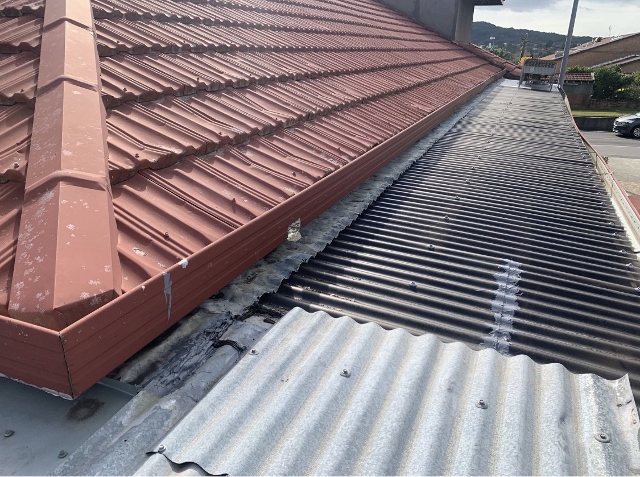
Thorough Inspections of Chimneys and Vent Flashings to Prevent Leaks
Chimneys and vents frequently cause roof leaks due to the openings they create, which must be adequately sealed. Over time, the flashing and seals around these features can deteriorate, leaving your roof susceptible to water damage.
Regular inspections and maintenance are crucial to ensure these areas remain watertight, regardless of whether your roof is tile or metal.
Complete Inspection Checklist for Tile Roofs:
- Cracked or missing tiles around the chimney base
- Loose or degraded mortar at the flashing edges
- Debris accumulation in valleys near the chimney that may trap water
- Flashing that has become detached or shows signs of corrosion
Comprehensive Inspection Checklist for Metal Roofs:
- Rusted or damaged metal flashing around the chimney
- Improperly sealed flashing overlaps or joints
- Fasteners that have come loose or deteriorated over time
- Gaps where the chimney meets the roof panel
Vent pipes represent another potential weak point in your roof's defense against water intrusion. These pipes are sealed with rubber boots that create a snug fit where they penetrate the roof. However, over time, these boots can crack, tear, or wear out, particularly due to exposure to sunlight and temperature fluctuations.
.slider-info-414.bafg-slider-info .bafg-slider-title {
font-size: 22px;
}
.slider-info-414.bafg-slider-info .bafg-slider-description {
}
.slider-info-414.bafg-slider-info .bafg_slider_readmore_button {
text-align: center;
}
.slider-info-414.bafg-slider-info .bafg_slider_readmore_button:hover {
}
.slider-414 .twentytwenty-overlay:hover {
background-color: rgba(0, 0, 0, 0.5);
}
Protecting Eaves and Roof Edges from Water Damage
The edges of your roof, particularly eaves and fascia boards, are critical areas that can be prone to leaks. When gutters fail to drain effectively, these components can rot, creating pathways for water to infiltrate beneath your roofing materials.
Installing proper drip edge flashing along roof edges is essential. This flashing helps to direct water into the gutters, preventing it from reaching vulnerable wooden structures that can decay over time.
To safeguard eaves and edges:
- Regularly clean gutters to keep them free of debris
- Consistently check for rotting fascia boards and replace them when necessary
- Ensure that drip edge flashing is intact and functioning properly
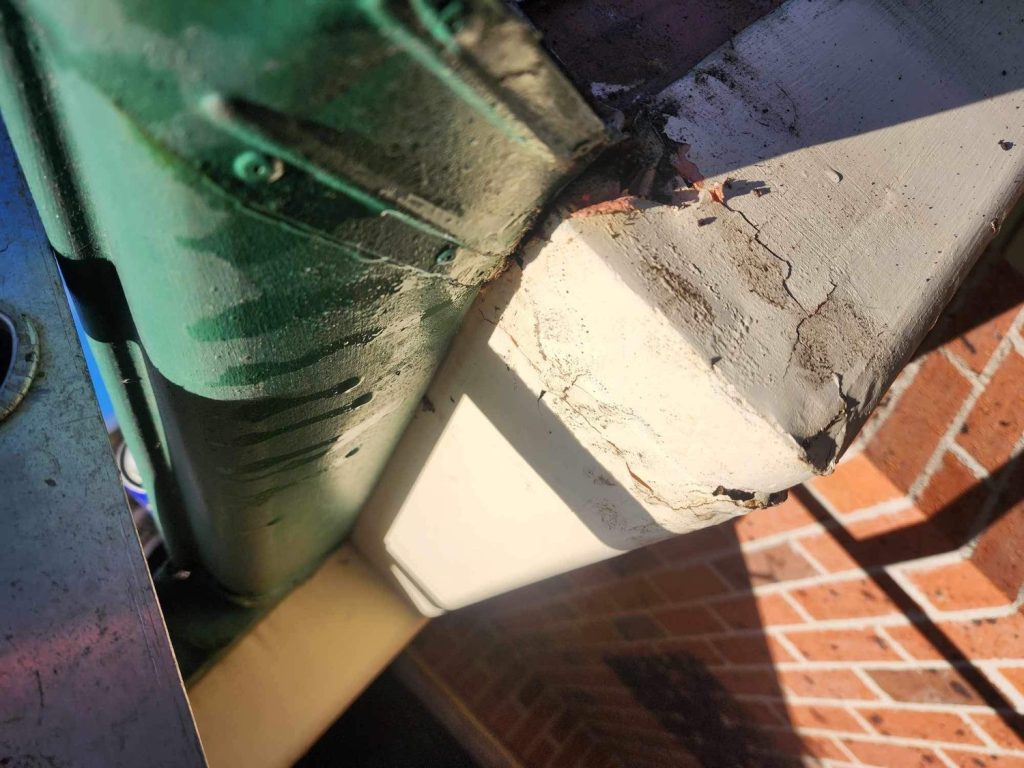
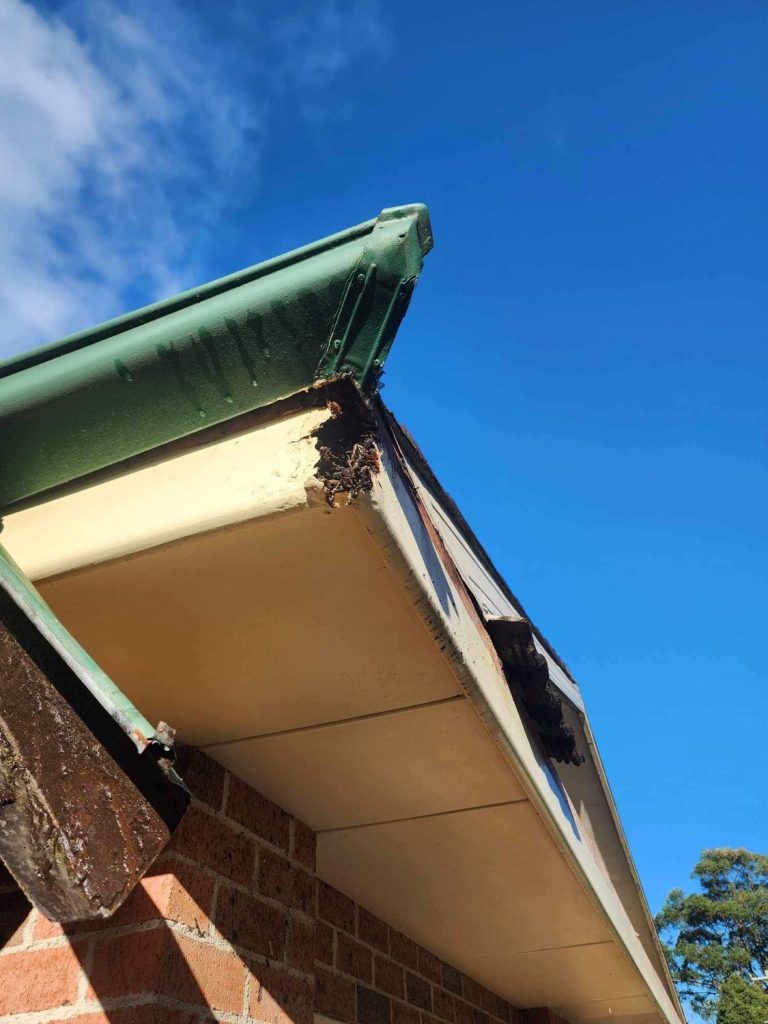
Implementing Proactive Strategies and Consistent Roof Maintenance
Regular roof maintenance is vital for preventing leaks before they occur. It is advisable to conduct thorough inspections at least twice a year, ideally during the autumn and spring seasons to ensure your roof is in optimal condition.
- Consistently clean gutters and downpipes to prevent water backup that may infiltrate your roof tiles or sheets.
- Consider upgrading gutter size or adding additional downpipes to enhance drainage efficiency.
- Inspect for cracked, loose, or missing tiles and promptly repair or replace them to maintain a watertight seal.
- Check metal roofs for rust and loose screws, treating rusty spots with paint and tightening any loose fasteners.
- Trim tree branches that overhang your roof, as they can scratch and damage roofing materials during storms.
- Ensure proper ventilation within your roof space to prevent moisture buildup that can lead to rotting and leaks.
- Apply sealant to joints and flashings every few years to maintain a watertight barrier.
- After significant storms, conduct a quick roof inspection to identify any new damage or loose components that may require attention.
If you are uncertain about what to look for, consider consulting a professional. They can identify issues you might overlook and provide valuable guidance on effective maintenance strategies.
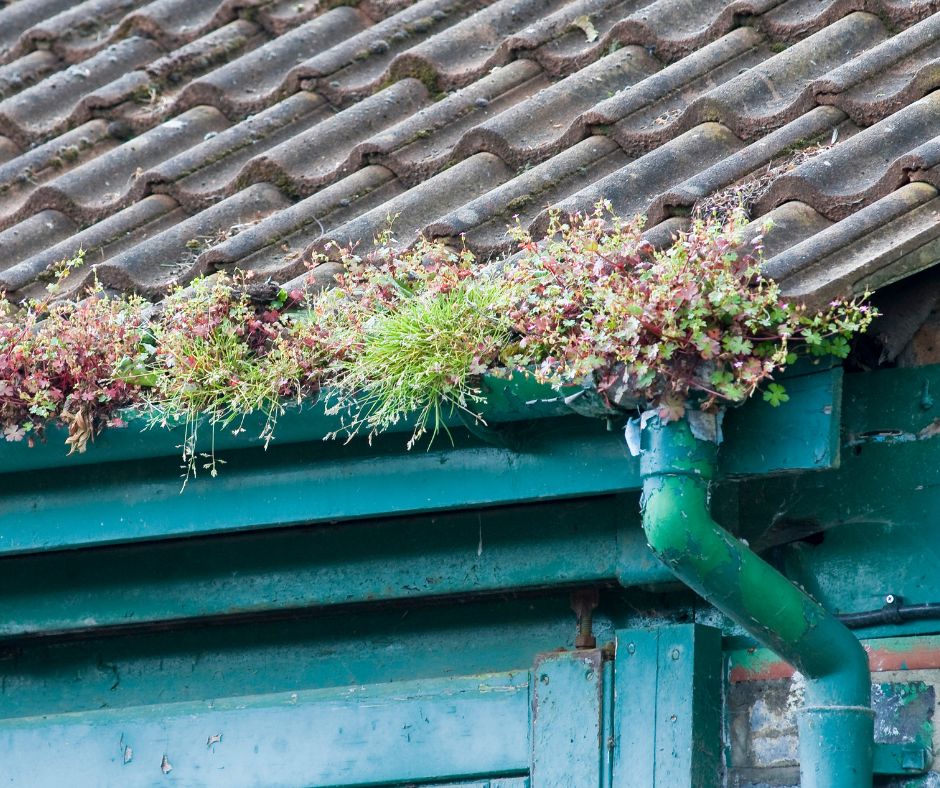
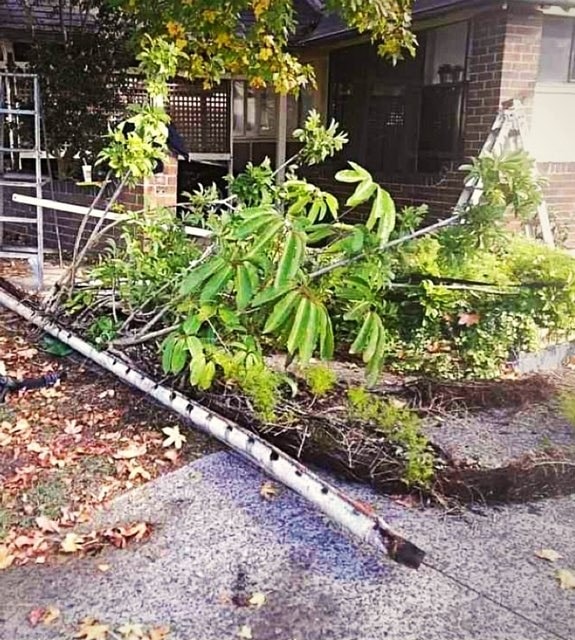
Engage with Local Roofing Experts for Tailored Solutions
AWS Roofing is your trusted local expert serving the Central Coast area.
If your roof is persistently leaking or has suffered damage, do not hesitate to contact our friendly team for a thorough roof inspection.
Common Questions about Roof Leaks and Their Solutions
Handling roof leaks can be a daunting task, yet understanding their causes and solutions can simplify the process. Here are some key insights regarding leaks, prevention strategies, and effective repair techniques.
How can I effectively identify the source of a roof leak?
To accurately determine the source of a roof leak, start by inspecting water stains or discolored patches on ceilings and walls. Check the attic or roof cavity during daylight to see if any sunlight is penetrating through. Additionally, use a hose to spray different sections of the roof while someone observes from the interior. Begin at lower areas and work your way upward, marking wet spots to clearly pinpoint the entry point.
What preventive measures should I take to avoid roof leaks during heavy rain?
To prevent roof leaks, routinely clean gutters and downpipes to ensure effective drainage. Trim any overhanging branches that could pose a risk. Quickly replace any cracked or missing tiles and shingles. Inspect and reseal flashing around chimneys and vents to maintain their integrity. Consider applying a waterproof coating to the roof surface, and schedule an annual inspection with a professional to ensure your roof is well-maintained.
What are common causes of intermittent roof leaks?
Intermittent leaks may arise from small cracks that only allow water in during heavy rain. Ice dams forming at the roof edge in winter can also contribute to problems. Wind-driven rain may infiltrate under loose shingles, and poorly sealed valleys where roof slopes converge can further exacerbate the issue. Additionally, clogged gutters can lead to overflow and subsequent leaks.
The Article: Roof leaks in heavy rain: common trouble spots and prevention tips first appeared on https://writebuff.com
The Article Roof leaks in heavy rain: prevention tips for common issues Was Found On https://limitsofstrategy.com
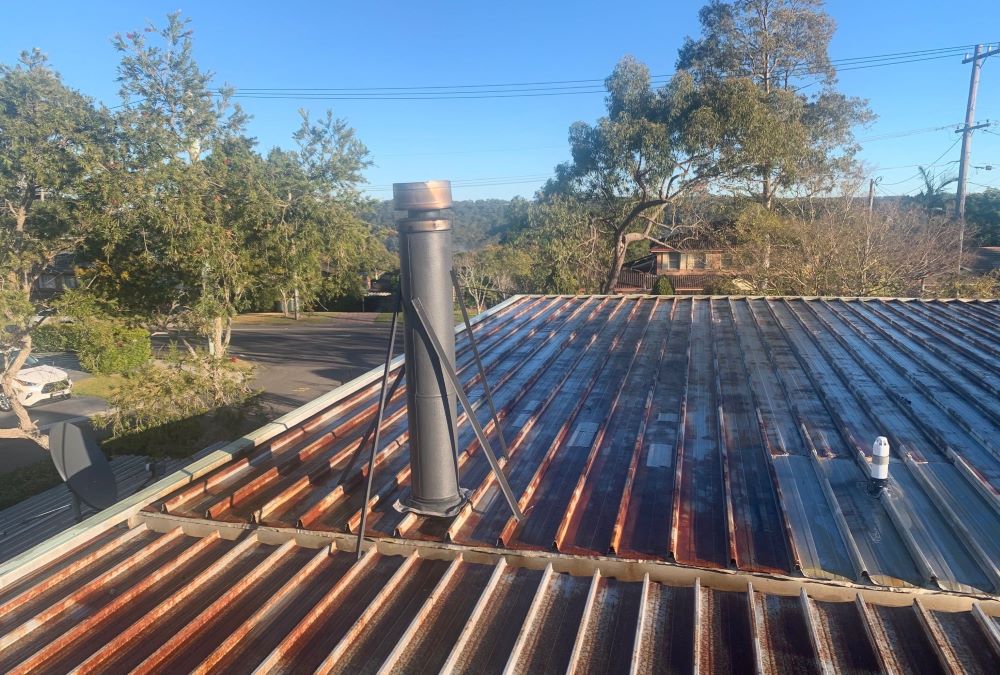
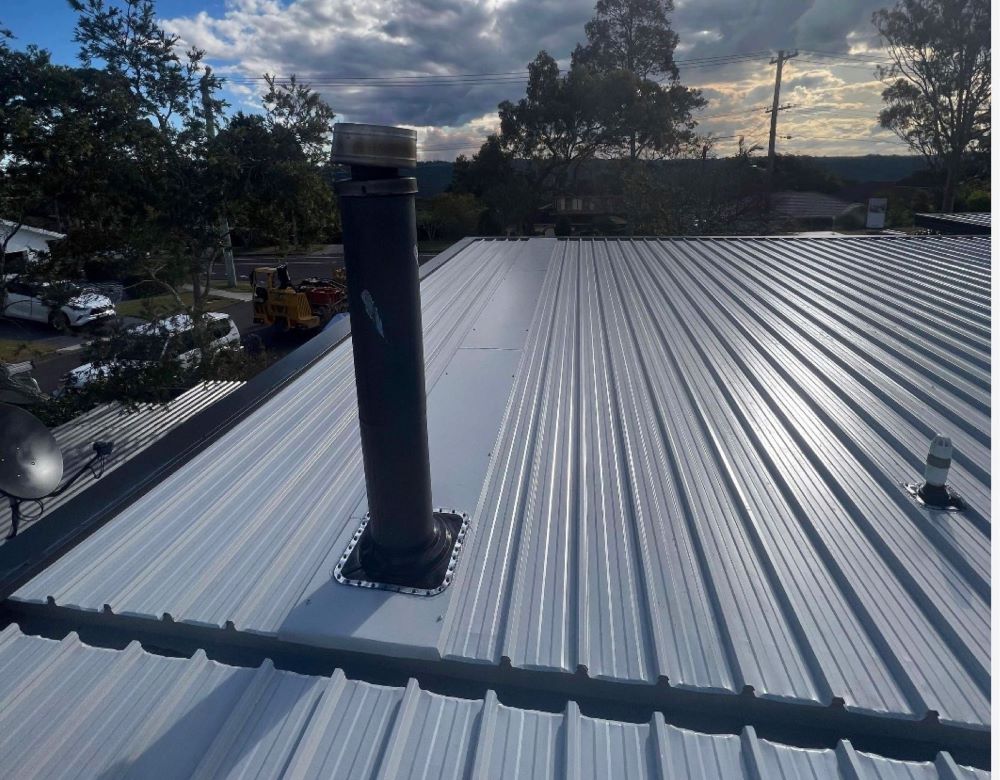
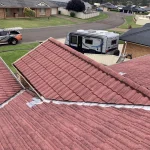
Your insights on the implications of a leaking roof resonate deeply, particularly in regions where intense weather events are becoming increasingly common due to climate change. It’s a stark reminder that our homes, often seen as safe havens, can reveal significant vulnerabilities when the elements test their integrity.
You’ve touched on something really important. The idea that our homes, which we often think of as our sanctuary, can actually have these hidden dilemmas is a sobering thought. It’s fascinating—and a little unsettling—how climate change is shifting our understanding of home maintenance and safety.
Your observations on roof leaks really resonate with me. I remember when we had a heavy storm last year, and I noticed some water stains on the ceiling. Initially, I thought it was just a minor issue, but it turned into a significant safety concern when I discovered that the leaks were actually coming from poorly sealed areas around our chimney and vent. It’s fascinating (and a bit alarming) how those junctions you mentioned can become such critical points of vulnerability.
It’s interesting how something as seemingly minor as a few water stains can turn into such a major concern. Your experience with the storm really highlights how vital those junctions are—like the areas around chimneys and vents that often get overlooked until there’s an issue. They can easily become weak spots, especially if we aren’t keeping an eye on them.
“Thanks for sharing your experience! If you’re looking to prevent similar issues, check out this guide on maintaining those critical junctions around your home.”
https://arquiaca.org/VideoLeap
I can totally relate to your experience with roof leaks, especially the way small issues can spiral into major concerns. It’s surprising how much we place our trust in these structural elements, only to realize later that even the tiniest gaps can lead to significant problems, like with your chimney and vent.
Your experience with the storm sounds pretty stressful, especially when those seemingly minor water stains turned into something much more serious. It’s so easy to underestimate the potential risks associated with roof problems, especially when they stem from those tricky areas around chimneys and vents. Those parts of the roof often get overlooked, and like you said, they can quickly transition from minor annoyances to major safety issues.
“I’m glad my observations struck a chord with you! If you’re looking for tips on how to properly seal those vulnerable areas and prevent future leaks, check out this helpful guide.”
https://arquiaca.org/eComToolkit